Upper eyelid surgery is indicated when an excess of skin covers the upper eyelid to an extent that exceeds the benefits of maximum medical treatment (Botox + support with hyaluronic acid on the temples).
This excess tissue typically leads to visual fatigue due to the constant need to contract the forehead muscles to lift the upper eyelid; otherwise, the visual field is reduced in the upper part.
This surgery, also called upper blepharoplasty, involves removing this excess skin through a small incision, mostly hidden in the suprapalpebral fold. If necessary, it can also correct a hollow eye, which may be responsible for dry eyes.
From an anatomical perspective, the pre-tarsal part of the eyelid, i.e., the mobile part near the eyelashes, will be preserved.
The procedure is performed under light general anesthesia, without intubation, allowing the use of the latest generation electronic scalpel that cuts and cauterizes simultaneously. As a result, bruising is rare.
During the initial consultation, a comprehensive analysis of your face will be conducted in front of the mirror, studying:
Almost systematically, and to ensure a better result, Botox injections will be performed on the lower eyelid and eyebrow muscles during the preoperative consultation. In the last consultation before surgery, an LED treatment will be performed to prepare the tissues and minimize postoperative swelling.

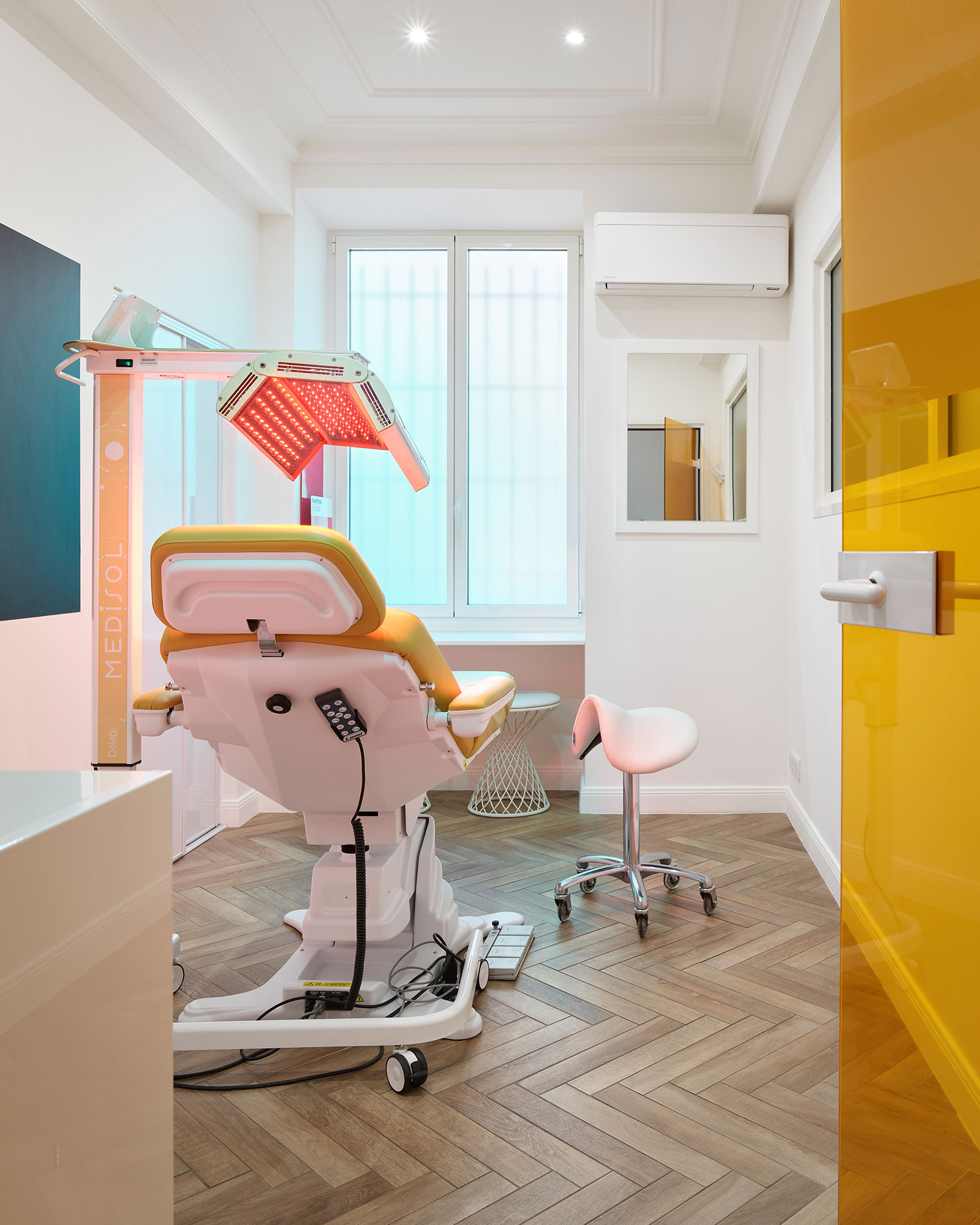
Some other techniques can be performed at the same time. Lipofilling can be associated with the upper eyelid to treat a hollow eye.
Lateral support can be provided beforehand by injecting hyaluronic acid into the temple. Surgical repositioning of the eyebrow tail may also be considered.
At the end of the consultation, in addition to verbal information, my assistants will provide written information in the form of sheets from the French Society of Plastic and Aesthetic Surgery, along with a detailed estimate covering surgery fees, anesthesia, clinic costs, and postoperative appointments.
The surgery takes place at the Saint-George Clinic in Hall 2, in a department dedicated to aesthetics located on the footbridge, in the same building as the underground parking.
The surgical team and service teams are specifically trained in pre and postoperative aesthetic care.
The surgery lasts just under an hour. Entry and exit from the clinic are on the same day. A strip is placed on the scar for two days.
You are not allowed to return home alone or sleep alone on the first night. You are not allowed to drive for 24 hours after general anesthesia.
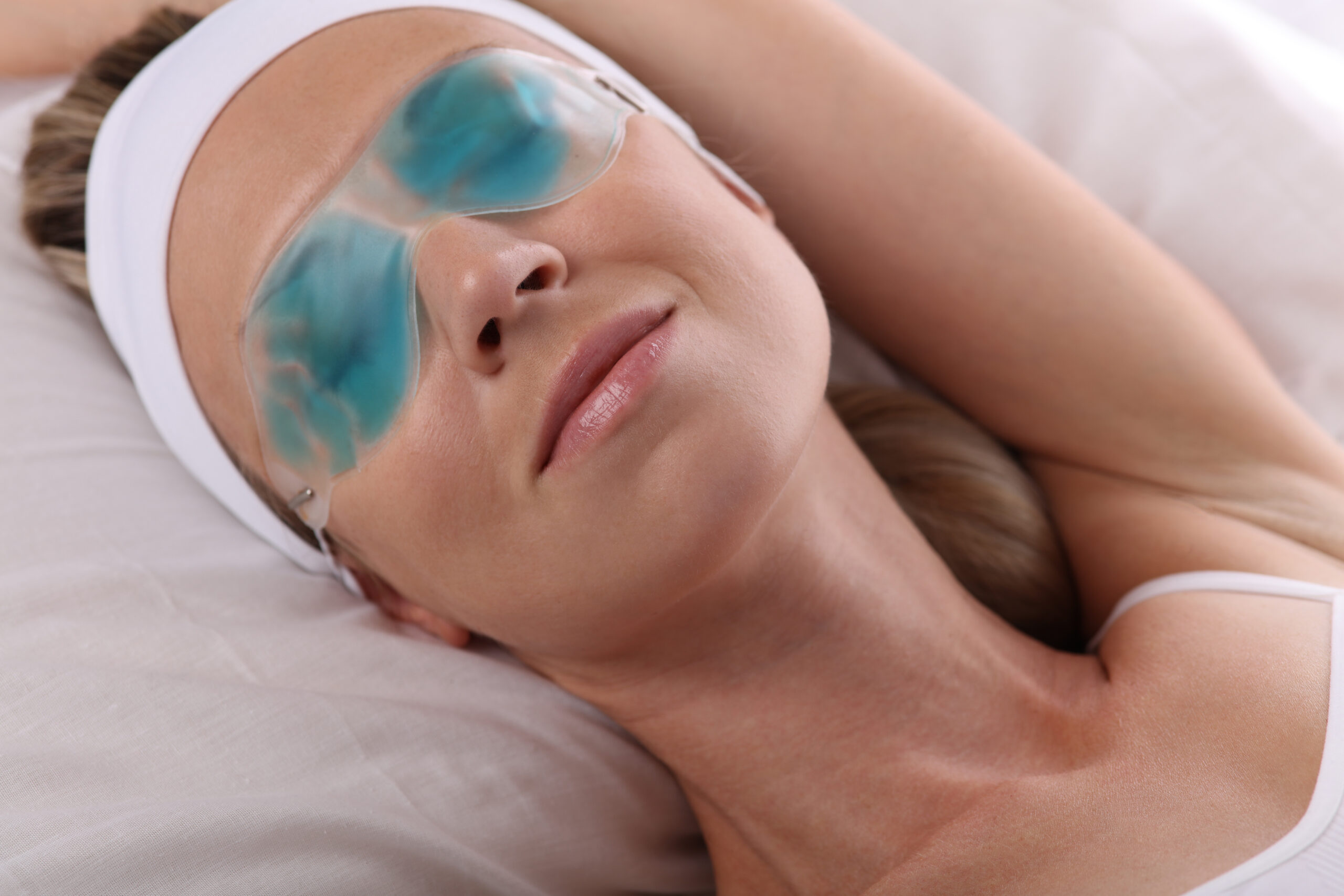
At home:
To minimize swelling, we recommend sleeping elevated and on your back for at least 15 days to three weeks. Applying cold to the eyes for 5 times 20 minutes each day and before sleeping is recommended.
Morning and evening care, including disinfection, drying, and the application of a fatty gel, should be done for 10 days. Artificial tears to be applied at least twice a day will be provided for a minimum of one month. Of course, no sports for a month.
At the office:
Twice a week, you will come for LED treatments at the office to minimize swelling, accelerate healing, and monitor progress. Additionally, regular check-ups during the first month are reassuring for everyone. Remote visits are used to monitor healing.
The scar becomes almost invisible over time. If necessary, erbium laser sessions (no social eviction) can finalize the healing. It will then be essential (in my opinion) to preserve the result with biannual injections of botulinum toxin, which will help prevent the upper eyelid from descending over time due to the action of the orbicularis muscle.
A quick anatomical reminder: the orbicularis muscle is responsible for closing the eye. Its outer part is responsible for crow's feet wrinkles. It is also the main depressor of the eyebrow.
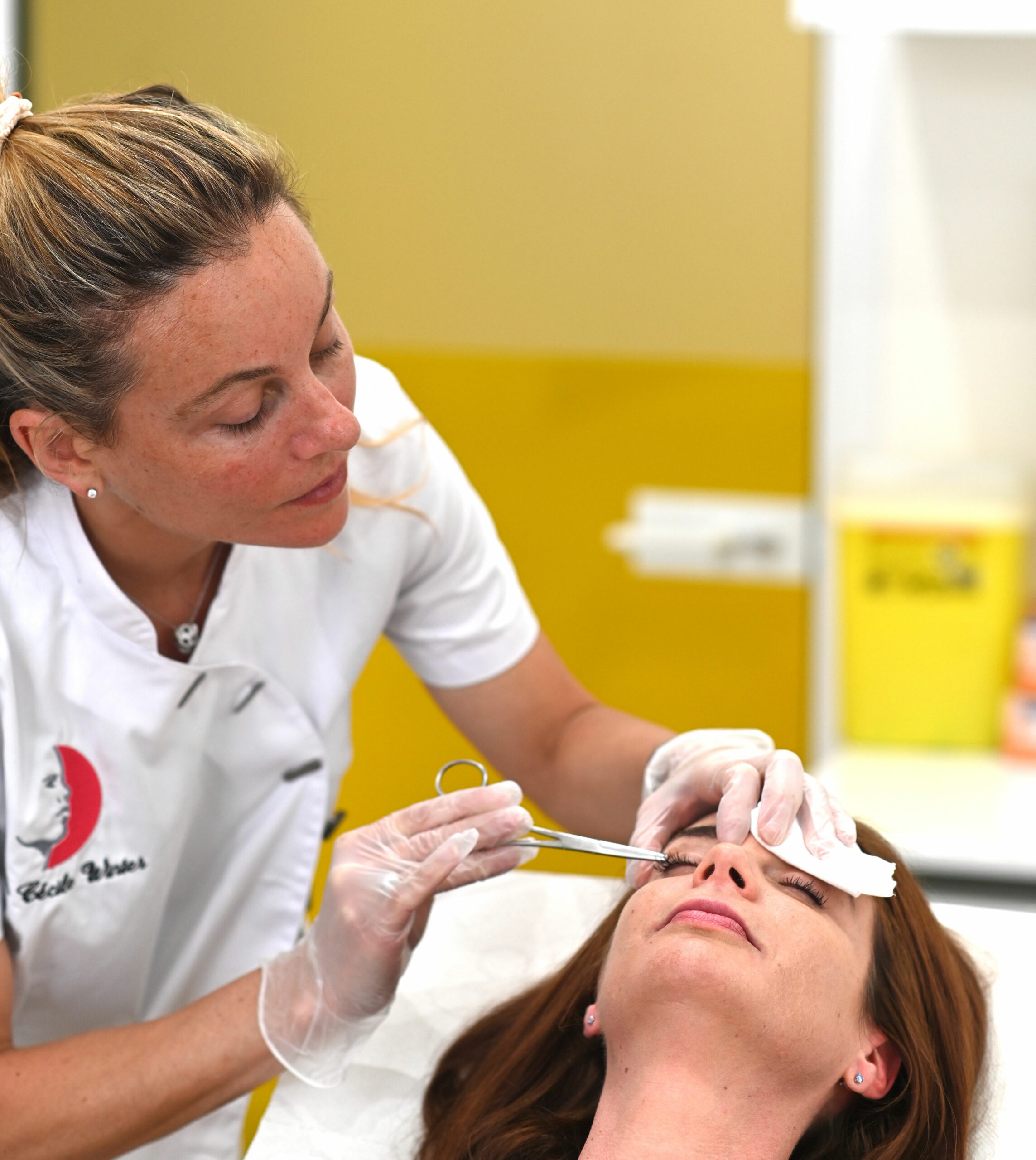
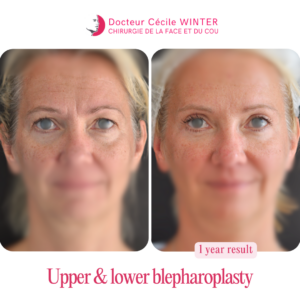
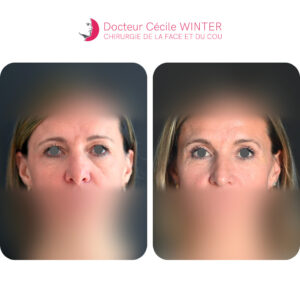
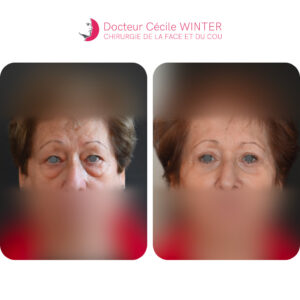
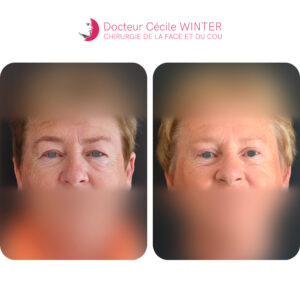
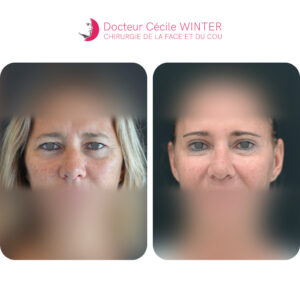
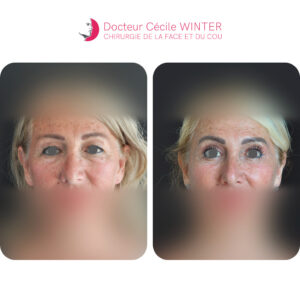


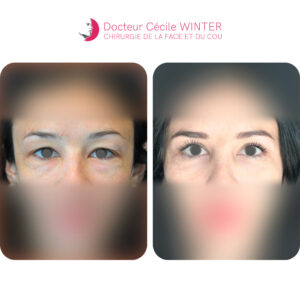



Upper and Lower Blepharoplasty with Lipostructure for Visual Fatigue
Patient presenting with visual fatigue due to hypertonia of the frontal and corrugator muscles (frown lines) and elongation of the upper eyelid, causing headaches at the end of the day. There is also a lack of support in the anterior cheek, leading to a loss of support in the lower eyelid, the appearance of a fat orbital pouch, and the beginning of rounding of the lower eyelid.
A transconjunctival upper and lower blepharoplasty, combined with lipostructure, was performed. This surgery restores normal upper and lower eyelid function, provides a healthy appearance, and eliminates visual fatigue. Muscle relaxation was achieved with botulinum toxin.



Facial Aesthetic Surgery and Prevention
The face is an extremely complex structure anatomically and very delicate aesthetically. Combining skills in facial surgery, aesthetic surgery, and aesthetic medicine allows for comprehensive and optimal care.
For this patient, an upper and lower blepharoplasty was performed with no visible scars to brighten the eyes. A lipostructure was carried out to enhance the cheekbones and improve facial contours. Additionally, hyaluronic acid injections were applied to the smile lines and jawline to harmonize and perfect the overall appearance.















Upper Eyelid Surgery
Upper eyelid surgery is indicated when an excessive amount of skin covers the free eyelid and maximal medical treatments such as Botox and/or hyaluronic acid support on the temples have been surpassed. This excess skin, known as blepharochalasis, often leads to visual fatigue and headaches caused by the hypercontraction of the frontal muscles that lift the eyebrows and upper eyelids. In advanced cases, it can even result in a reduction of the visual field.
This surgery, also called upper blepharoplasty, involves removing the excess skin through a small incision mostly hidden in the supratarsal fold. From an anatomical perspective, the eyelid’s role is to protect the eyeball by closing. Thus, the pretarsal eyelid, which is the mobile part near the lashes, is preserved.
The procedure is performed under light general anesthesia, without intubation, allowing the use of a state-of-the-art electronic scalpel that both cuts and cauterizes at the same time. As a result, bruising is rare.






Surgical Blepharoplasty
Visual fatigue is a common reason for consultation in facial surgery. The appearance of bags under the eyes and the lack of support for the lower eyelid can lead to dry eyes. Excess skin on the upper eyelid can also result in a reduced field of vision and headaches by the end of the day.
Surgical blepharoplasty is the gold standard treatment for bags under the eyes and excess skin on the upper eyelid. It is an outpatient procedure with excellent results and minimal discomfort for the patient.
The result shown here is observed one year after the procedure.